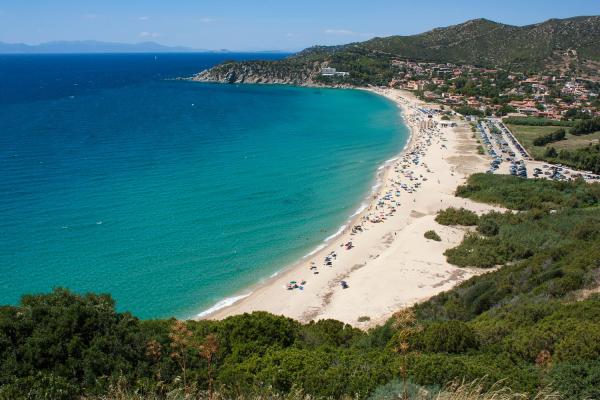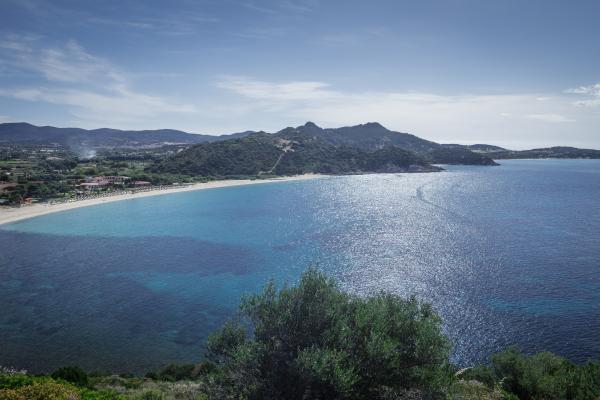In the easternmost part of the Golfo degli Angeli (Gulf of Angels), a rocky promontory covered with dense Mediterranean greenery extends towards the sea: on its right lies an immense expanse of golden sand, while on the left there are a series of coves with very white sand nestled in the cliff. Overlooking the promontory, called Capo Boi, 120 metres above sea level, stands an ancient watchtower, which has dominated this spectacular panorama for almost five centuries. The cape represents the western limit of the marine protected area of Capo Carbonara, as well as the coastal border between Campidano and Sarrabus, and it falls within the coastal enclave of the Municipality of Sinnai.

Promontory
The place where the horizon was once scrutinised in fear of pirates, now dominated by the silence of nature, is a picture postcard landscape in the extreme south-east of Sardinia
The place where the horizon was once scrutinised in fear of pirates, now dominated by the silence of nature, is a picture postcard landscape in the extreme south-east of Sardinia
See this place because...
You will explore an area of great charm, at the foot of a historic guard fortress, overlooking the Golfo degli Angeli, next to wide golden beaches and secluded coves
Nearby
Services
Ti piace questo luogo? Villasimius potrebbe essere la tua meta ideale.
You may also like
More attractions in the vicinity










